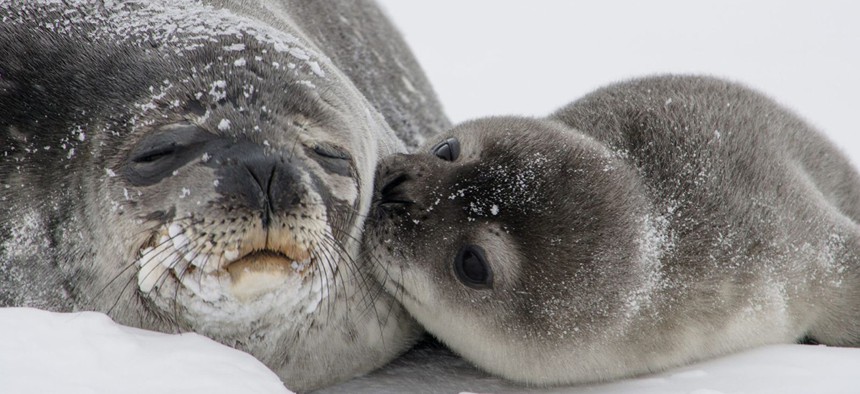Scientists Search for Antarctic Seals Using Satellite Imagery—and You Can Help

U.S. Geological Survey
Crowdsourcing made adorable.
Last night, I went hunting for seals in Antarctica.
Well, actually I was sitting in my apartment in New York City, and the seals were digital, but still—it was real science. Researchers are asking for the public’s help counting Weddell seals in satellite images of Antarctica to get a better sense of how the fishing industry is affecting the Ross Sea ecosystem.
Because Antarctica is so massive, Weddell seals have never been comprehensively counted.
“No one knows how many seals there are,” says Michelle LaRue, a conservation ecologist at the University of Minnesota, so scientists can’t even say whether the marine mammal is endangered.
LaRue and her team of researchers turned to crowdsourcing platform Tomnod (which means “big eye” in Mongolian), to help scour 300 miles of the Antarctic coastline. Typically, a project like this would take years—”If I wanted to do it myself, it would take forever,” LaRue said—but with the help of at-home volunteers, the research team expects to get sense of the seal population in a fraction of that time.
The Tomnod project began last week, and when it’s complete, the count will be compared to work scientists are doing on the ground. LaRue and her collaborators will also look at how the seal population has changed over about 10 years of satellite imagery.
Counting these rotund seals is easy: Tomnod presents satellite images of the Antarctic ice, rectangle by rectangle, and you tag any seals that you see. The seals are small, shaped like tear drops, and stick out on the white ice. Other users are assigned to review the same area, and a given animal is included in the official count if there’s a consensus a black speck is, in fact, a seal and not just some dust on your screen.



The project could also lead to other Antarctic insights. Weddell seals rely on the Antarctic toothfish, also known as the Chilean seabass, for food. Humans, too, like Chilean seabass—it’s a popular item on restaurant menus. But little is known about the fish’s life cycle and they’re difficult to count without pulling them out of the ocean in a net. By counting the Chilean seabass’ main predator, researchers hope they can learn a bit more about the fish and how other animals rely on them.
Tomnod has been used in the past to look for aircraft debris in the Indian Ocean, child slaves in Ghana and damage from earthquakes in Chile and Nepal. LaRue is excited about what the platform can do for Weddell seal knowledge, and in turn Chilean seabass.
“This is going to provide us with the distribution and numbers of a species for the first time,” she said. “We couldn’t do this without people’s help.”


